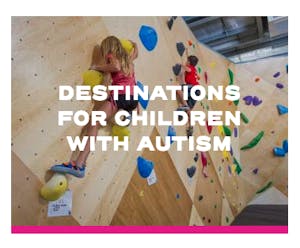- 7 minute read
- Business Management Tips
- Industry Insights
All Skill Levels
Get a behind-the-scenes-look into FareHarbor's 2024 season

You’ve heard us say many times that your website is your number one sales tool. When a user lands on your website, you have a chance to convert them into a customer through great copy, easy-to-navigate design, and exciting imagery. Your website is also the first place to demonstrate that your business is open to all.
As we explain in our guide to accessible tourism, inclusivity and accessibility are not only good ethics, but they also make great business sense. User experience (or UX) is tied to accessibility because it asks you to consider how people with different abilities, from different nationalities, of different ages, etc. interact with your website and whether there are any roadblocks to them having a positive experience and ultimately making a booking.
If these topics are new to you, you can start by reading our guides to making your website more accessible and improving your website’s UX.
One important place where UX and accessibility intersect is your content. Effective UX writing not only improves the usability of your website, making it easy to understand and navigate, but it also uses inclusive language that creates a sense of belonging among all users. Follow these tips to help you make your website’s UX writing more inclusive and accessible.
Unconscious bias and ingrained ideas about gender, race, age, ability, and more can lead us to use stereotypes in our writing, even when that’s not the intention. (Learn more about intention vs. impact in our guide to inclusive marketing.) For example, associating a certain tour with one gender can alienate potential customers who wanted to enjoy that tour but feel excluded by the text. Consider the following example:
“Get your gal pals together and join us for a brunch tour across San Diego!”
There’s no reason why only women would enjoy a brunch tour. You don’t have to identify as a certain gender to love breakfast foods or have a fun morning out with your favorite people. This text can be easily adapted to be more inclusive:
“Get your friends together and join us for a brunch tour across San Diego!”
Just a small change immediately makes this text more inclusive. Here are some other gendered words to avoid and how to replace them.
Making your language more inclusive isn’t always this easy. Give careful thought to any assumptions you’re making about your potential customers in your writing and make it a practice to remove any kind of stereotyping from your website content.
You’ll often have to use language related to accessibility when describing your tours. An important rule to remember is to put people first. For example, rather than saying “we have ramps for wheelchair users,” opt for “we have ramps for people using wheelchairs.” People are not disabled, autistic, epileptic, etc. They have disabilities, autism, epilepsy, etc.

visitflorida.com
Not everyone consumes the content on your website in the same way. Some visitors use assistive technology such as screen readers, and if you don’t optimize your copy for these, it could come across as awkward or difficult to understand. However, it only takes a few easy steps to make sure your content is accessible.
Remember that visitors to your website come from a variety of backgrounds, are different ages, speak different languages, etc. Especially in the tourism industry, it’s common to have customers from around the world who might not be fluent in your business’ primary language.
When writing your website content (including navigation menus, buttons, activity descriptions, contact pages, and FAQs), keep the language clear and simple. Use short sentences and common words that everyone can understand. Avoid overly specific language such as slang, jargon, or acronyms that only people in your industry would know. If you have to use acronyms, be sure to explain them or spell them out in the first reference.
It’s particularly important for your CTAs (calls to action) to be clear and simple so users know exactly where they need to click and where the button is going to lead them. While there’s some room for creativity in your CTAs, it shouldn’t be at the expense of clarity. When in doubt, a plain CTA like “book a tour” or “subscribe to our newsletter” is better than something ambiguous like “sign me up” or “join the fun.”

dsatours.com
People access your website on different devices, and if you’re using responsive design, the layout of your pages will change depending on the size of the screen and type of device. This is why you should avoid directional language such as “click the button on the right.” Additionally, this type of language won’t make any sense to someone using a screen reader. Opt for simple statements that work on any type of device, like “use the ‘Book Now’ button.”
It doesn’t end with your website’s UX – the text you share on your social channels, marketing materials, and beyond should always take into account the vast diversity of people who might read it. Rather than trying to account for every background and experience, aim to make your writing inclusive and accessible by avoiding language that could single anyone out or make someone feel excluded.
It takes work to be more conscious of our language, but once you start doing it, you’ll easily recognize where you can update your copy to be more inclusive – and improve your UX in the process.